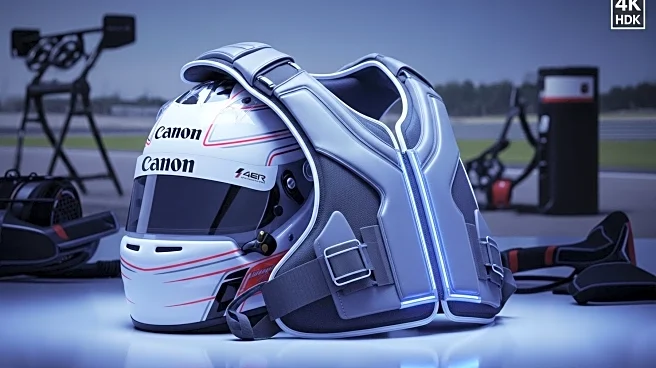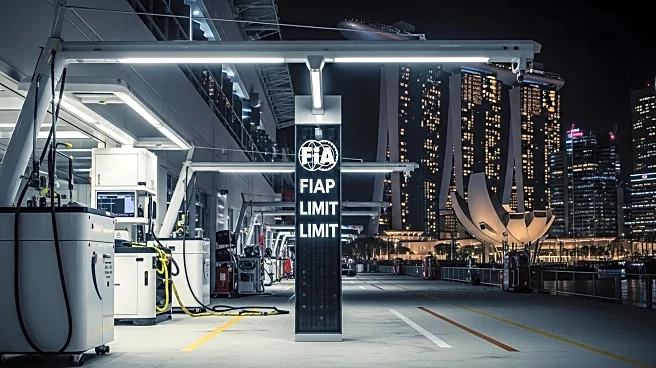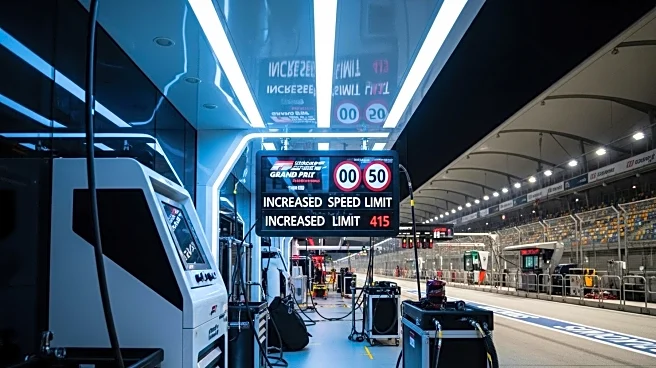What's Happening?
The Singapore Grand Prix has been officially declared a 'heat hazard' by race director Rui Marques due to forecasted high temperatures exceeding 31 degrees Celsius (88 degrees Fahrenheit) during the race weekend. This declaration requires Formula 1 cars to carry cooling equipment, marking the first time such a rule has been implemented in the sport. The FIA, the governing body of Formula 1, has introduced cooling vests for drivers, which circulate fluid through a network of tubes to help manage body temperature. While drivers are not obligated to use these vests, they must have some form of cooling system installed in their cars, along with ballast to offset the weight of the vest. This development follows the Qatar Grand Prix in 2023, where drivers experienced health issues due to extreme heat.
Why It's Important?
The implementation of cooling equipment at the Singapore Grand Prix highlights the increasing challenges posed by extreme weather conditions in motorsports. This move is significant as it prioritizes driver safety and addresses the physical demands of racing in high temperatures. The decision could set a precedent for future races held in similarly hot climates, potentially influencing race strategies and car designs. Teams may need to adapt their vehicles to accommodate the additional weight and space requirements of cooling systems, impacting performance and fuel efficiency. The broader implication is a growing awareness and response to climate-related challenges in sports, emphasizing the need for innovative solutions to ensure athlete safety.
What's Next?
As the Singapore Grand Prix proceeds under the new 'heat hazard' rules, teams and drivers will likely evaluate the effectiveness of the cooling equipment and its impact on race performance. The FIA may consider extending these regulations to other races with similar climate conditions, prompting discussions on standardizing cooling measures across the sport. Stakeholders, including teams, sponsors, and fans, will be watching closely to see how these changes affect race dynamics and driver health. The outcome of this race could influence future policy decisions within Formula 1 regarding environmental and safety standards.
Beyond the Headlines
The introduction of cooling equipment in Formula 1 raises questions about the long-term implications of climate change on global sports events. As temperatures continue to rise, sports organizations may need to invest in research and development to create sustainable solutions for athlete safety. This situation also highlights the potential for technological advancements in wearable cooling systems, which could have applications beyond motorsports, benefiting other outdoor sports and industries facing similar heat challenges.











